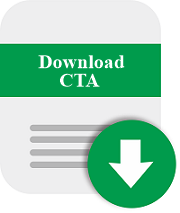PROPOSING AWQAF ALTERNATIVE PLAN (AAP): THE WAY FORWARD & SUSTAINABLE HIGHER EDUCATION FINANCIAL SYSTEM
DOI:
https://doi.org/10.18196/ijief.113Keywords:
Waqf, Higher Education and Awqaf Alternative Plan (AAP) modelAbstract
The future direction of the public university is to self-sustained due to the inconsistency of the national economic growth. For example, reduced in the national income has forced the Malaysian government to cut the allocation of funds to various ministries’ in 2016 compared to 2015 budget. The consequences of this phenomenon the government has reduced the allocation of budget to Ministry of Higher Education, which is cut by RM2.4 billion, from RM15.78 billion in 2015 compared to RM13.37 billion in 2016. This scenario has imposed various challenges to many public universities’ management to manage university expenses and explore new avenue to generate income. There are various ways to generate income and we find most of the tertiary education in Malaysia is not able to practice effective management especially in managing the cost of organizing a program. For example, food and beverages (F&B) spend by the university during events are not effective and most of the time is wasted. This argument is developed based on the observation and also supported by an informal interview with a vice-chancellor (VC) of one of the public university in Malaysia. The VC do agree that the university management needs to find a solution to overcome the issue of wastage due to the forecasted cost rather than an accurate cost to organize a university’s events. Therefore, we believe that the main issue faced the university’s management is to identify an exact number of participants and etc. Thus, the current practice is based on the forecasted estimation rather than accurate estimation. Therefore, to solve this problem, the present study aims to provide an opportunity to the tertiary education in Malaysia which able to estimate an accurate cost and at the same time able to create waqf fund using effective fund management approach by proposing awqaf alternative plan (AAP) model. The proposed model is expected to generate Waqf fund and eliminate wastage management practice.
References
Affandi.H and Nufus.D. (2010), “Analysis of Cash Waqf Return Fund Allocation in Indonesia: A Case Study in Indonesian Waqf Deposit”. Available at http://www.ukm.my/hadhari/sites/default/files/prosiding/p7.pdf
Ahmad, S., & Muhamed, N. D. (2011). Institusi Wakaf dan Pembangunan Ekonomi Negara: Kes Pembangunan Tanah Wakaf di Malaysia. PROSIDING PERKEM VI, JILID 1 (2011) 138 – 147, ISSN: 2231-962X.
Alias T.A. (2012). Venture Capital Strategies in Waqf Fund Investment and Spending”, ISRA International Journal of Islamic Finance, Vol. 4, Issue 1.
Cizakca, M. (2004). Cash Waqf as Alternative to NBFIs Bank. International Seminar on Nonbank Financial Institution: Islamic Alternative. Kuala Lumpur: Islamic Research and Training Institution, Islamic Development Bank and Islamic Banking and Finance Institute Malaysia.
Elgari MA (2004). The Qard Hassan Bank. International Seminar on Nonbank Financial Institutions: Islamic Alternatives, March 1-3, 2004, Kuala Lumpur, jointly organized by Islamic Research and Training Institute, Islamic Development Bank and Islamic Banking and Finance Institute Malaysia
Habib Ahmed, Role of Zakah and Awqaf in Poverty Alleviation (Saudi Arabia: Islamic Development Bank Group Islamic Research & Training Institute, Jeddah, 1st edn., 2004), 128.
Hassan, A. and Shahid, M.A. (2010), “Management and development of the awqaf assets”, Paper Presented at the Seventh International Conference-The Tawhidi Epistemology: Zakat and Waqf Economy, Bangi.
Hoexter, M. (1998). Waqf Studies in the Twentieth Century: The State of the Art. Journal of the Economic and Social History of the Orient, 41, 474-495.
Jalil, Abdullaah & Ramli, Ashraf Mohd, (2008). Waqf Instruments For Construction Contract: An Analysis Of Structure. Journal of Muamalat and Islamic Finance, 5(1).
Mohammad MTSH (2008). Sustaining the means of Sustainability: The need for accepting Wakaf (Waqf) assets in Malaysian property market. The 14th Annual Conference of the Pacific Rim Real Estate Society, January 20 - 23, 2008, Istana Hotel, Kuala Lumpur, Malaysia
Sabit, M. T. (2006). An Ideal Mechanism for the Development of Waqf Properties. Johor: Universiti Teknologi Malaysia Press, 2nd Edition.
Sabit, M. T. (2009). Alternative Development Financing Instruments For Waqf Properties. Malaysian Journal of Real Estate, Volume 4 No 2.
Sadeq, (2002) "Waqf, perpetual charity and poverty alleviation", International Journal of Social Economics, Vol. 29 Issue: 1/2, pp.135-151, https://doi.org/10.1108/03068290210413038
Tohirin, Achmad. (2010), The Cash Waqf for Empowering the Small Businesses. Seventh International Conference – The Tawhidi Epistemology. Zakat and Waqf Economy, Bangi.
Downloads
Published
How to Cite
Issue
Section
License
License
This journal is based on the work available at http://journal.umy.ac.id/index.php/ijief/ under a license from Creative Commons Attribution-ShareAlike 4.0 International License.
You are free to:
- Share – copy and redistribute the material in any medium or format.
- Adapt – remix, transform, and build upon the material for any purpose, even commercially.
The licensor cannot revoke these freedoms as long as you follow the license terms, which include the following:
- Attribution — You must give appropriate credit, provide a link to the license, and indicate if changes were made. You may do so in any reasonable manner, but not in any way that suggests the licensor endorses you or your use.
- ShareAlike — If you remix, transform, or build upon the material, you must distribute your contributions under the same license as the original.
- No additional restrictions — You may not apply legal terms or technological measures that legally restrict others from doing anything the license permits.
Creative Commons Attribution-ShareAlike (CC BY-SA)

This work is licensed under a Creative Commons Attribution-ShareAlike 4.0 International License.


